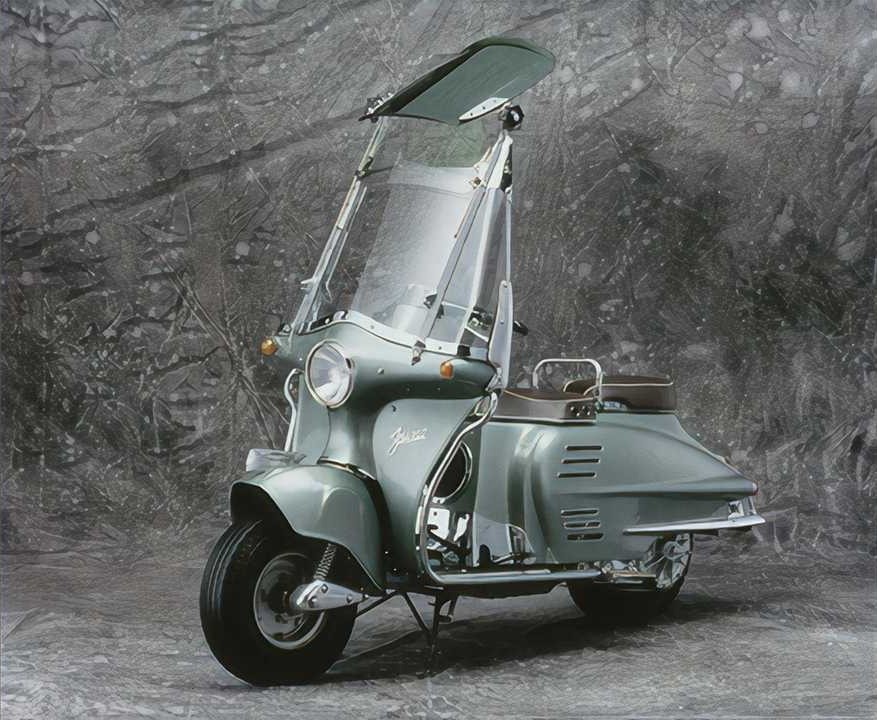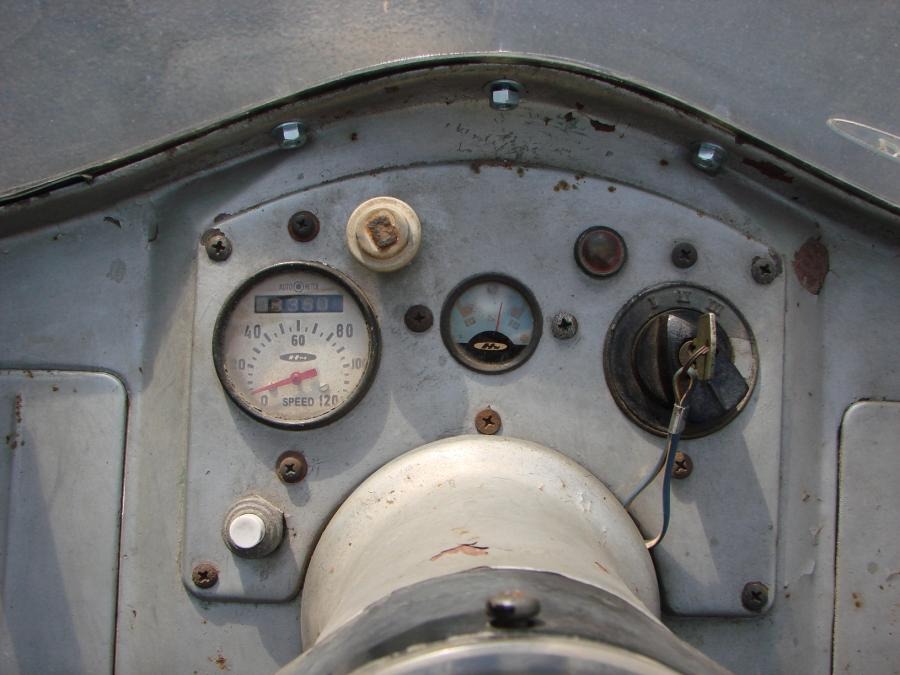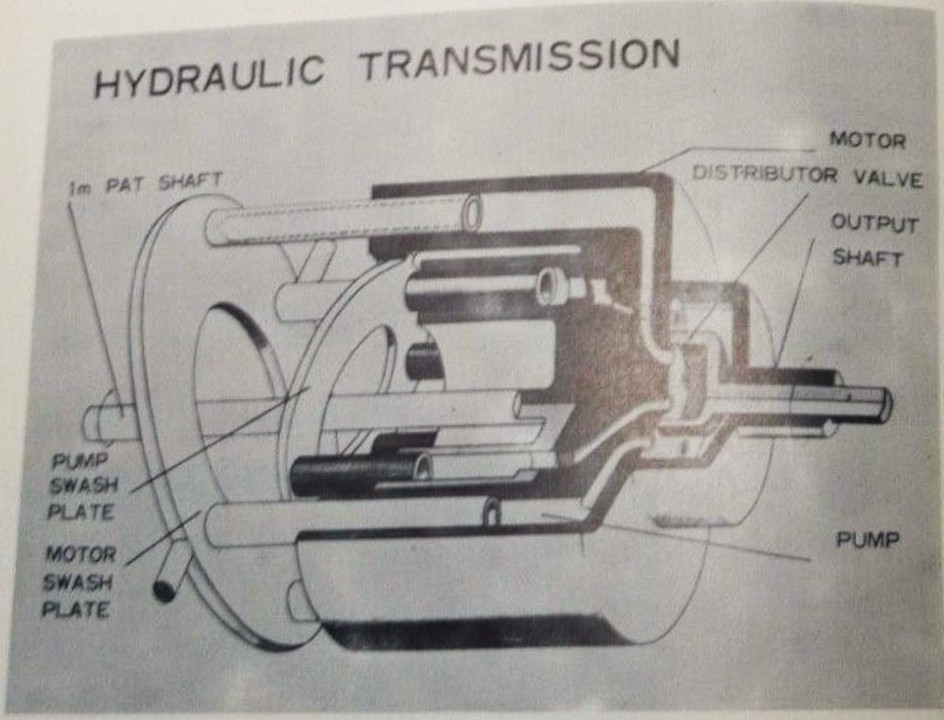Honda is one of a handful of motorcycle manufacturers that isn’t afraid to think outside of the box when it comes to motorcycles. The marque’s history is littered with oddball failures that no other motorcycle manufacturer would even dare to put to market. Honda’s first two scooters are a perfect example of Honda at its best. The 1954 Honda Juno K tried too hard to be like a car while its successor, the 1962 Juno M, laid the groundwork for Honda’s automatic motorcycles of today.
A couple of weeks ago I wrote about one of the weirder motorcycles in Honda’s history. The DN-01 tried to combine a scooter, a cruiser, and a sportbike into one ergonomics disaster. Honda says that the DN-01’s inspiration was a scooter it made in the 1960s. That scooter is, the Honda Juno M80 and M85.

It looks like a regular old steel scooter, but underneath is a neat boxer twin engine and an early version of Honda’s automatic motorcycle transmission. That scooter alone is pretty neat and we’ll get to it later, but what first grabbed my attention is the scooter that came before it. That is the Juno K, and it was Honda’s first scooter. It even came four years earlier than the legendary Super Cub.
A Splendid Failure

In the 1950s, Honda decided to enter the scooter market. The company notes that at the time, the Japanese scooter industry was dominated by the Rabbit by Fuji Heavy Industries and the Silver Pigeon by Shin Mitsubishi Heavy Industries. Both of these scooters got Japanese citizens back on the road after World War II and helped revolutionize vehicle manufacturing in the region. The Fuji Rabbit, which was released in 1946, is notable for being Japan’s first scooter. As our friends at the Lane Motor Museum note, the Rabbit was largely based on Powell scooters used by U.S. servicemen in the war.
Honda decided that to beat the established competition, it was going to release a scooter with a laundry list of innovations. In 1954, the result was the Honda Juno scooter, and Honda believes that it engineered a scooter so advanced that it was doomed to be a failure.

In concept, Honda’s first scooter blended elements of a car into a two-wheeler, from Honda:
This product was packed with new features not seen in the scooters offered by the rival manufacturers it was going up against. It had the world’s first self-starter on a two-wheeled vehicle and a large, all-weather windscreen which was further equipped with turn-signal lights, another first. It was practically the scooter version of an automobile. An especially original feature was its FRP body panels. FRP is a plastic reinforced with polyester and glass fiber, and at that time it was a brand-new material. The first vehicle to use it had been the 1953 Chevrolet Corvette, of which only about three hundred were produced, and mass-production techniques using this material were still under development, even in the United States.
Looking back at this project from today, none of this is all that amazing. The 1986 Honda Helix has all of this and more. However, keep in mind that this came a full three decades earlier and even four years earlier than the first Honda Cub. This scooter even predates the similar-ish Ariel Leader by four years.

Honda notes that the Juno K’s engineering at least somewhat involved making things up as the engineers progressed. In designing the FRP material, engineers sound samples removed from the mold to have pinholes, bumps, and pitting. When they tried polishing it, glass fibers shot into their skin. And the paints the team used on metal were useless on the FRP.
Unfortunately for Honda, the problems didn’t end when the production version hit the road. Here’s Honda being critical of its own product:
Its engine was completely enclosed by FRP, which is not good at dissipating heat, so the poor cooling caused it to overheat frequently. The FRP body had been intended to reduce weight, but it turned out to be heavier than expected. That and the deluxe features brought the machine’s weight to 170 kg, making handling difficult. Moreover, it was underpowered at that weight, so it didn’t provide a good ride. The cantilevered suspension that was intended to make changing tires easier also had problems.

Power in the Juno K came from a 189cc four-stroke single making 6.4 HP and 10.3 lb-ft torque. On a good day, it could muster 43.4 mph and it was heavy for a scooter at 374.7 pounds.
The company goes on to note that it wasn’t just the Juno K that had a bunch of problems, but each of its four mainline motorcycle products had issues. Sales of the Honda Cub F motorized bicycle screeched to a halt as buyer desires shifted away from motorized bicycles. The Honda Dream 4E had problems with rough idling and stalling out while the Honda Benly was known for noisy gears and tappets.

When it came to the Juno K, Honda brass expected the scooter to be a runaway hit. In 1954, the marque also released Juno KA (above) and KB models. These had larger 220cc engines making 8.8 HP and sported revised bodywork, but weight also climbed to 430 pounds. The Juno K-type sold for just two model years, moving only 5,856 units. The scooter was expensive and today, Honda remembers it as “a splendid failure.”
In true Honda fashion, even the Juno’s sequel would be weird.
An Ancestor To Honda’s Modern Automatics

The Honda of today is happy to sell you a number of motorcycles with automatic transmissions. You can walk into a Honda Powersports dealership and pick up a Gold Wing, a motorcycle with an automatic dual-clutch transmission plus so much tech and features that it feels like a two-wheeled car. I mean, this is a motorcycle with tie rods in its steering system! In addition to the Gold Wing, you could also get a Rebel cruiser, a NC750X adventure bike, and an Africa Twin adventure bike. Those ignore scooter-based models like the PCX, Navi, ADV150, Ruckus, and more. Even the best-selling Super Cub C125 has a semi-automatic transmission.
Honda says that a lot of its modern automatic motorcycles can trace their roots decades back to the marque’s earlier efforts. One vehicle that often shows up as an important milestone in Honda automatic transmission development is the 1962 Honda Juno M85.

As Honda noted in its own explanation of why the first Juno failed, the company noticed that its customers didn’t want a manual transmission on their scooters. Part of the selling point of a scooter is that it’s easy to ride, so an automatic makes a scooter even more accessible. Thus, for its second try at a scooter, Honda decided to engineer an automatic transmission.
In November 1961, Honda released the Juno M.

The first scooter would be the Juno M80 and it was a radical departure from the Juno K. This one wouldn’t bother with FRP, instead going with a traditional steel body. Also unlike the first Juno, this wouldn’t get a huge windscreen and the engine would be exposed to the air. At least on the surface, Honda decided to build a regular scooter.
Under the metal, things got a little weird. The first diversion comes from the engine, which was at first a 124cc boxer twin. Yep, Honda made scooters featuring a horizontally-opposed engine long before the engine type would find its way into a Gold Wing. The boxer in the Juno M80 made 11 HP. Later in 1962, the Juno would get a bump in displacement, creating the Juno M85. That engine was a 169cc unit making 12 HP.

That screenshot comes from a lovely teardown video of a Juno M85
The engine would be pretty cool enough, but to satisfy Honda’s desires to make an automatic scooter, the development team gave the Juno M a continuously variable hydraulic transmission. I could not find any diagrams from Honda or Italy’s Badalini about how this is supposed to work, but thanks to the power of eBay, I can give you a breakdown.
According to Scooterist, essentially Popular Mechanics for scoooters, the Juno M scooters use a hydraulic torque converter with an automatic manual clutch. There are no gears, instead, it used a hydraulic pump to enact mechanical action. Here’s a diagram:

And here’s the transmission’s case:

I could not find any reviews of this scooter, but I bet this was a smooth ride. Scooterist certainly saw the scooter being a hit here in America. Ultimately, it was another flop in Honda’s history. Honda has provided pricing information and the Juno M85 was ¥169,000 in 1962. Accounting for exchange rates and inflation, that translates to roughly $6,500 today. It’s no surprise that Honda sold just 5,880 units before canceling the scooter in 1963.
The good news is that these scooters weren’t entirely a waste of time for Honda. Over time, the marque refined its automatic transmissions into the clutchless fluidic drives found in the CM400A motorcycle and the Eara sportbike, the V-belt drive of the Tact scooter, and the DCTs of today. If you’re interested in Honda’s first takes on scooters, you’ll have to search Japanese marketplaces like GooBike Japan or work with an importer. Don’t be surprised if you don’t find any of these for sale, I sure couldn’t find any!
Support our mission of championing car culture by becoming an Official Autopian Member.

-
Powering A BMW Motorcycle With An Air-Cooled Volkswagen Engine Is A Thing And It’s Amazing
-
One Of The Only Mass-Produced Diesel Motorcycles In The World Allegedly Gets 200 MPG And Is For Sale In America
-
Honda Once Made A Bizarre Motorcycle That Forced A Scooter, Cruiser, And Sportbike Into An Unholy Marriage
-
The Yamaha Moko Powa D10 Is A Futuristic Motorcycle From A Company That Disappeared Without A Trace







Fascinating article Mercedes! Thanks very much! 🙂
Great, now I need to 3D print the Fuji Rabbit logo for my Subarus…
No mention of the Honda wing shaped cooling duct on the right side of the Juno? Corporate VI turned up to 11.
I’ve heard of the Fuji Rabbit and the Mitsubishi Silver Pigeon, but not Honda’s attempts.
That Juno M automatic transmission is interesting, I think they use something similar in their ATVs much later on.
I also remember riding an 80’s 4 stroke Honda scooter that had a 2-speed automatic, unfortunately I don’t remember what it was exactly.
Honda certainly experimented with all kinds of weird transmissions in their vehicles.
I just can’t get over that boxer twin engine. It’s like they over-learned from the first bike’s cooling issues and chose the configuration with maximum possible cylinder airflow.
So besides square-4, I-5, V-8 and rotary, are there any other engine configurations Honda hasn’t tried yet?
Inline 5 was done! https://en.m.wikipedia.org/wiki/Honda_G_engine
Is the title in the logo a call back to the intro song of the Late Late Show with Craig Ferguson? https://www.youtube.com/watch?v=0Q65Zivepvw I miss Craig, Bone Patrol, Secreteriat and Grant Imahara
That’s not a windshield, that’s riot gear protection. And that centerstand on picture 7 looks like it could hold up a building. Stuff I’ve never heard of. Thank you!
I’m particularly fond of the fuel filler (I assume that’s what it is) being right above the cooling fins and exhaust. Seems like the smartest place to put it.
“The world’s first self-starter on a two-wheeled vehicle?” Have they never heard of the 1914 Indian?
I think that’s a possible translation (?) error. In another press release Honda says first electric starter on a scooter.
It’s not a surprise that scooters and motor bikes thrived across Asian and Mediterranean countries as they generally have climates conducive to year-round riding and two wheelers are so very thrifty. What I find fascinating is the sheer sophistication of these vehicles. All of my motorcycles, save for one BMW K75s, have been Hondas. I don’t currently have a ride, but I’m seriously considering a Super Cub. It’d be the smallest bike I’ve ever had, but seems to embody all I’d ever need these days. Thanks for the informative read. Now I’m going to go put on the Beach Boys’ “Little Honda” and dream.